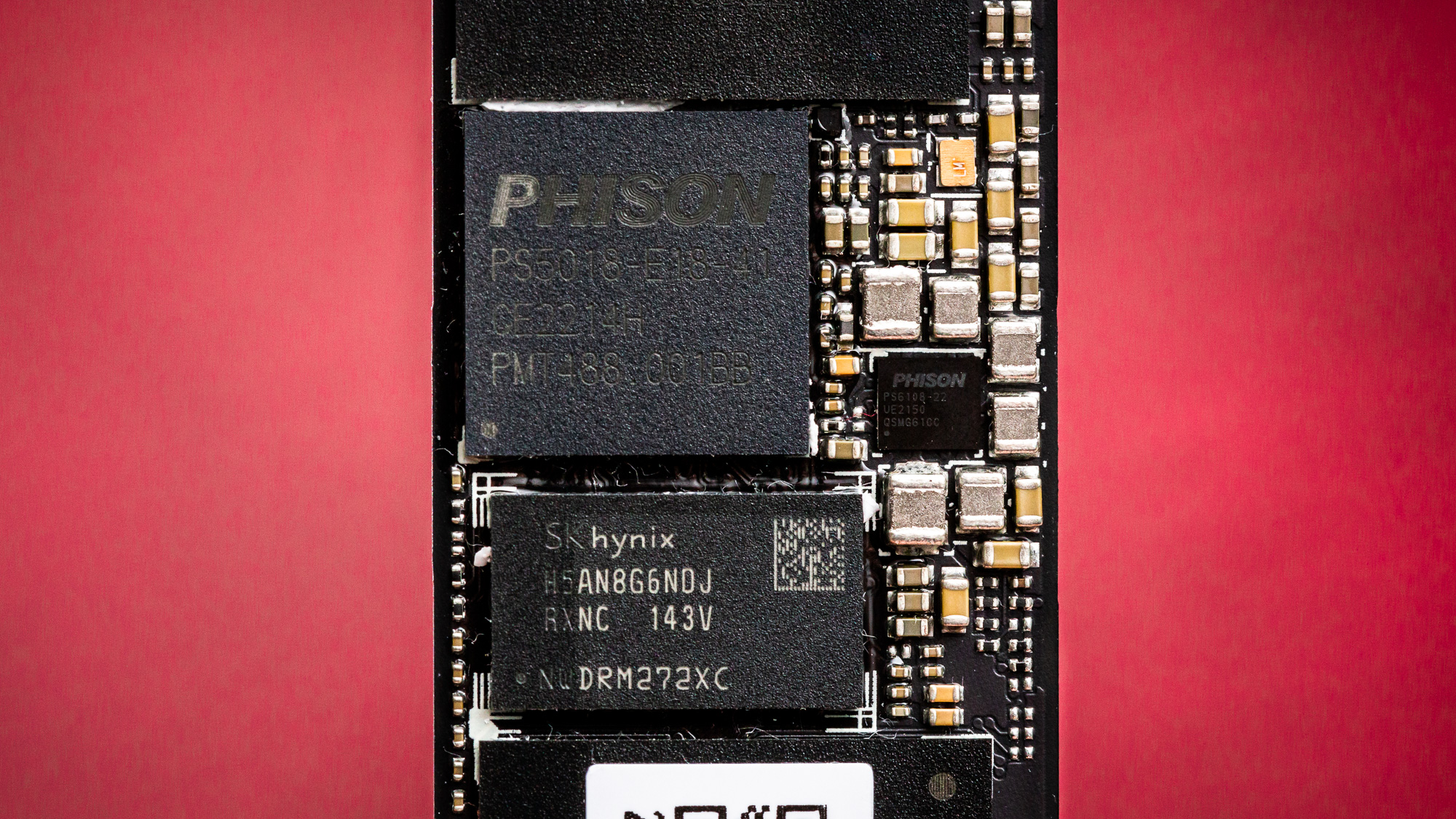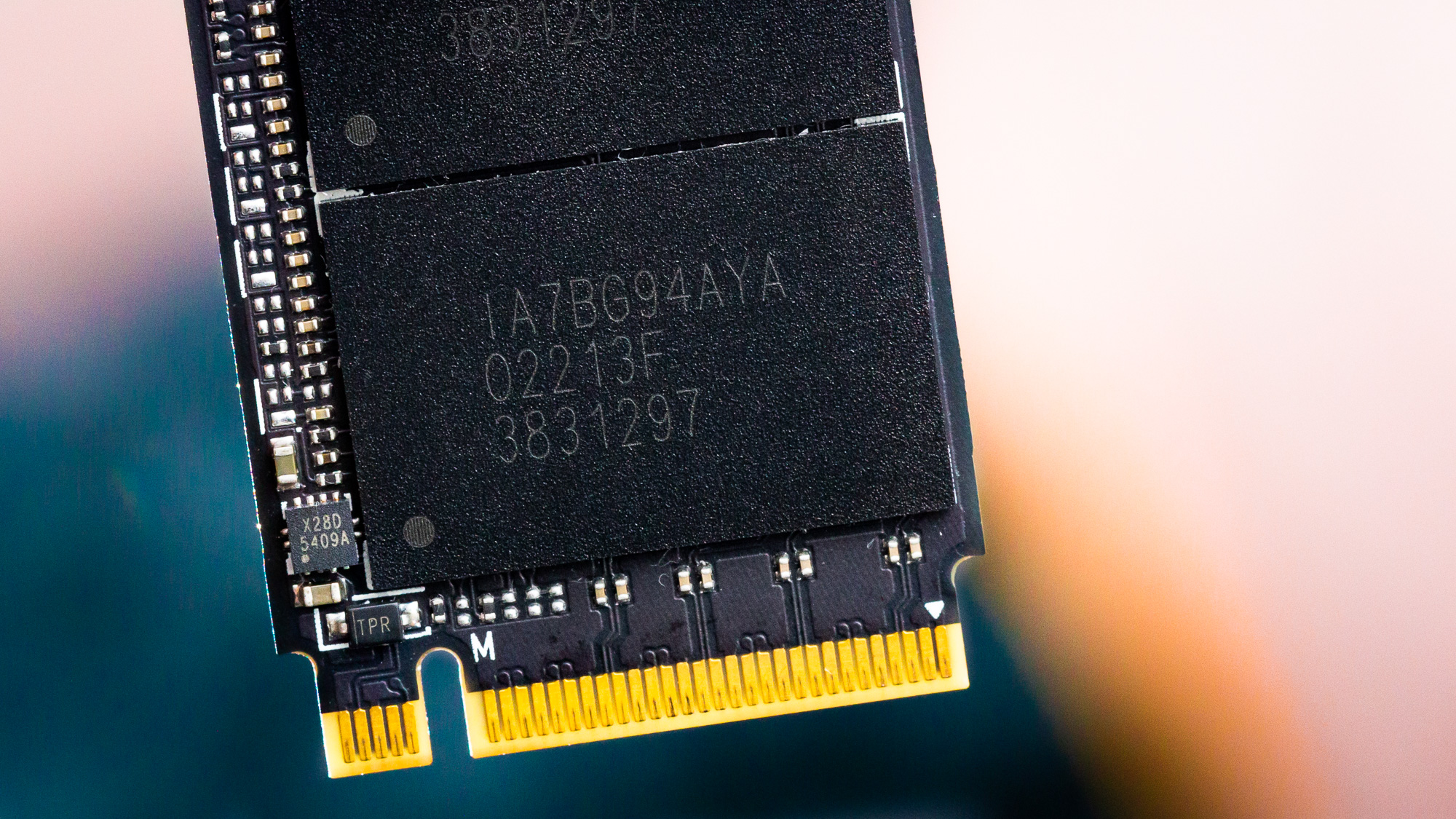Tom's Hardware Verdict
The 4TB Rocket 4 Plus-G offers a lot of very fast capacity, rivaled perhaps most directly by the WD Black SN850X. The Rocket 4 Plus-G has the advantage of DirectStorage-optimized firmware, but may need a heatsink to reach its full potential.
Pros
- +
Consistent, all-around performance
- +
Custom firmware for DirectStorage
- +
4TB of capacity
Cons
- -
MSRP
- -
Heatsink needed for best results
Why you can trust Tom's Hardware
November 30, 2022 Update 2: We've added new testing for the 4TB Sabrent Rocket 4 Plus-G SSD on page 2. This drive has also been added to our list of Best SSDs for the PS5.
November 9, 2022 Update 1: We've updated this article with new testing for the 1TB Sabrent Rocket 4 Plus-G SSD on page 3.
Original Review published November 7, 2022:
The Sabrent Rocket 4 Plus-G is a high-end, gaming-oriented PCIe 4.0 SSD that uses a very fast controller combined with the best flash on the market to deliver an excellent all-around experience. It’s specifically designed to take advantage of Microsoft’s upcoming DirectStorage API for both production and gaming workloads, making it overkill for a PlayStation 5 but a good fit for high-end PCs, especially if you’re a gamer.
The Rocket 4 Plus-G has a lot of similarities to the updated version of the Sabrent Rocket 4 Plus. The latter launched with 96-layer Micron TLC flash but later switched to improved 176-layer TLC. This flash is present in some of the very fastest drives we’ve tested, often combined with Phison’s E18 controller. This is the case for both drives, but the Rocket 4 Plus-G takes things further with its customized O2GO game-optimized firmware. This firmware is based on Phison’s I/O+ firmware, designed to boost and maintain performance during DirectStorage gaming.
DirectStorage gaming is still in the future — Microsoft has announced that DirectStorage 1.1 with GPU decompression should be available to developers by the end of this year — but improvements to the drive can still bring benefits today. The Rocket 4 Plus-G is based on mature hardware, and Phison has shown general improvements with its firmware. This drive is still a luxury product but leads the way for Direct Storage SSDs.
Specifications
| Product | 1TB | 2TB | 4TB |
|---|---|---|---|
| Pricing | $169.99 | $299.99 | $699.99 |
| Form Factor | M.2 2280 | M.2 2280 | M.2 2280 |
| Interface / Protocol | PCIe 4.0 x4 | PCIe 4.0 x4 | PCIe 4.0 x4 |
| Controller | Phison E18 | Phison E18 | Phison E18 |
| DRAM | DDR4 | DDR4 | DDR4 |
| Flash Memory | 176-Layer Micron TLC | 176-Layer Micron TLC | 176-Layer Micron TLC |
| Sequential Read | 7,200 MBps | 7,200 MBps | 7,200 MBps |
| Sequential Write | 6,000 MBps | 6,850 MBps | 6,850 MBps |
| Random Read | N/A | N/A | N/A |
| Random Write | N/A | N/A | N/A |
| Security | N/A | N/A | N/A |
| Endurance (TBW) | 700 TB | 1,400 TB | 2,800 TB |
| Part Number | SB-RKTG-1TB | SB-RKTG-2TB | SB-RKTG-4TB |
| Warranty | 5-Year | 5-Year | 5-Year |
The Sabrent Rocket 4 Plus-G is available at 1TB, 2TB, and 4TB. Unfortunately, there’s no 8TB SKU as found on the Rocket 4 Plus — that particular model required a different type of flash for which the updated firmware is not designed.
At the time of review, Sabrent had not released official performance specifications for this drive. However, it should match or exceed the Rocket 4 Plus, which gets up to 7,200/6,850 MBps for sequential reads and writes. It should also match similar drives with this hardware at up to 1 million random read/write IOPS.
Get Tom's Hardware's best news and in-depth reviews, straight to your inbox.
The Rocket 4 Plus-G is backed by a 5-year warranty when registered at Sabrent’s site and is additionally warrantied for 700TB of writes per TB of capacity. Sabrent has set MSRP at $169.99, $299.99, and $699.99 for the 1TB, 2TB, and 4TB models, respectively. This pricing is in-line with other high-end PCIe 4.0 drives at launch, like the WD Black SN850X and Samsung 990 Pro.
The drive also launched alongside a beefy heatsink with three copper heatpipes that appears capable of keeping this or any other SSD cool even under sustained workloads. Its MSRP is a reasonable $29.99.
Software and Accessories
Sabrent offers a basic SSD toolbox and cloning software for its SSDs. The toolbox displays information about the drive, including diagnostics, with support for firmware updates and other features. In addition, an OEM version of Acronis True Image allows you to image and clone drives, which facilitates drive installation. Of course, software support for this type of drive isn’t necessary, but it’s a convenient plus.
The Rocket 4 Plus-G comes with Sabrent’s typical warranty support, including software, but the drive also launched alongside a massive heatsink. This heatsink includes three copper heatpipes and appears capable of keeping this or any other SSD cool even under sustained workloads. Its MSRP is a reasonable $29.99. Beyond the aesthetic value, we recommend additional cooling for high-end PCIe 4.0 SSDs — advice reinforced by the data we acquired while testing simulated DirectStorage workloads that generate quite a bit of heat. This is particularly true for the 2TB and 4TB models.
A Closer Look
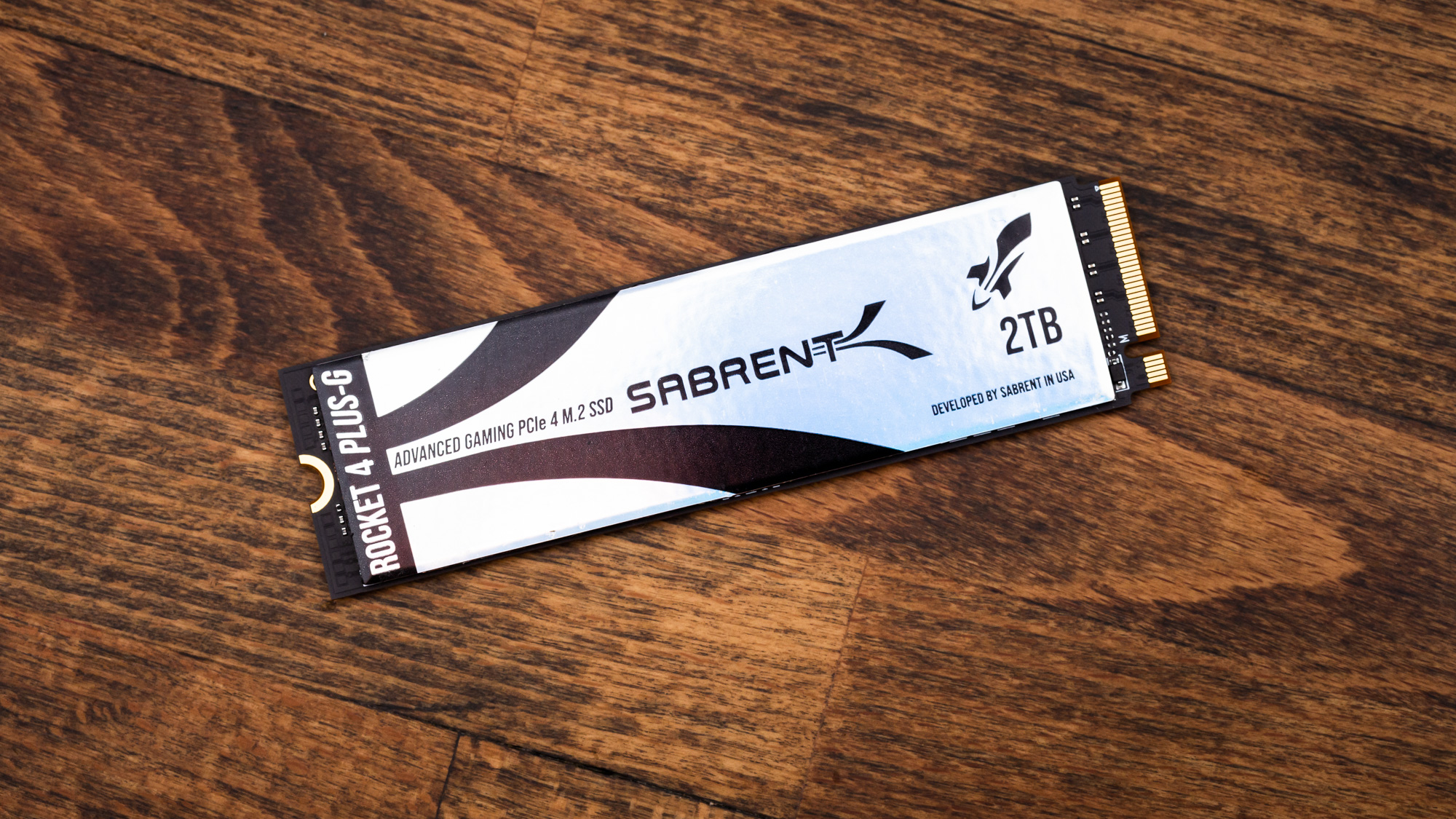

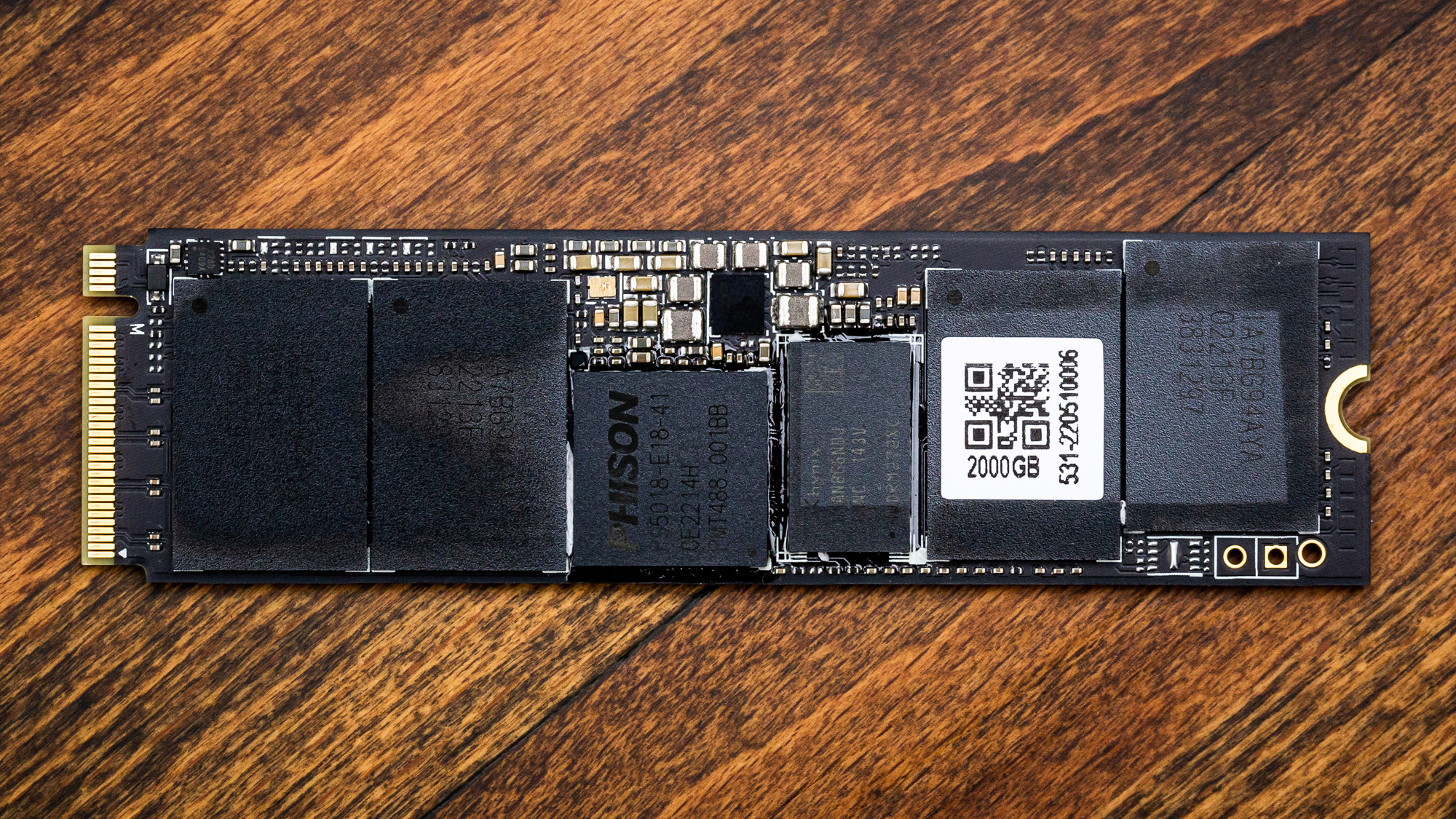
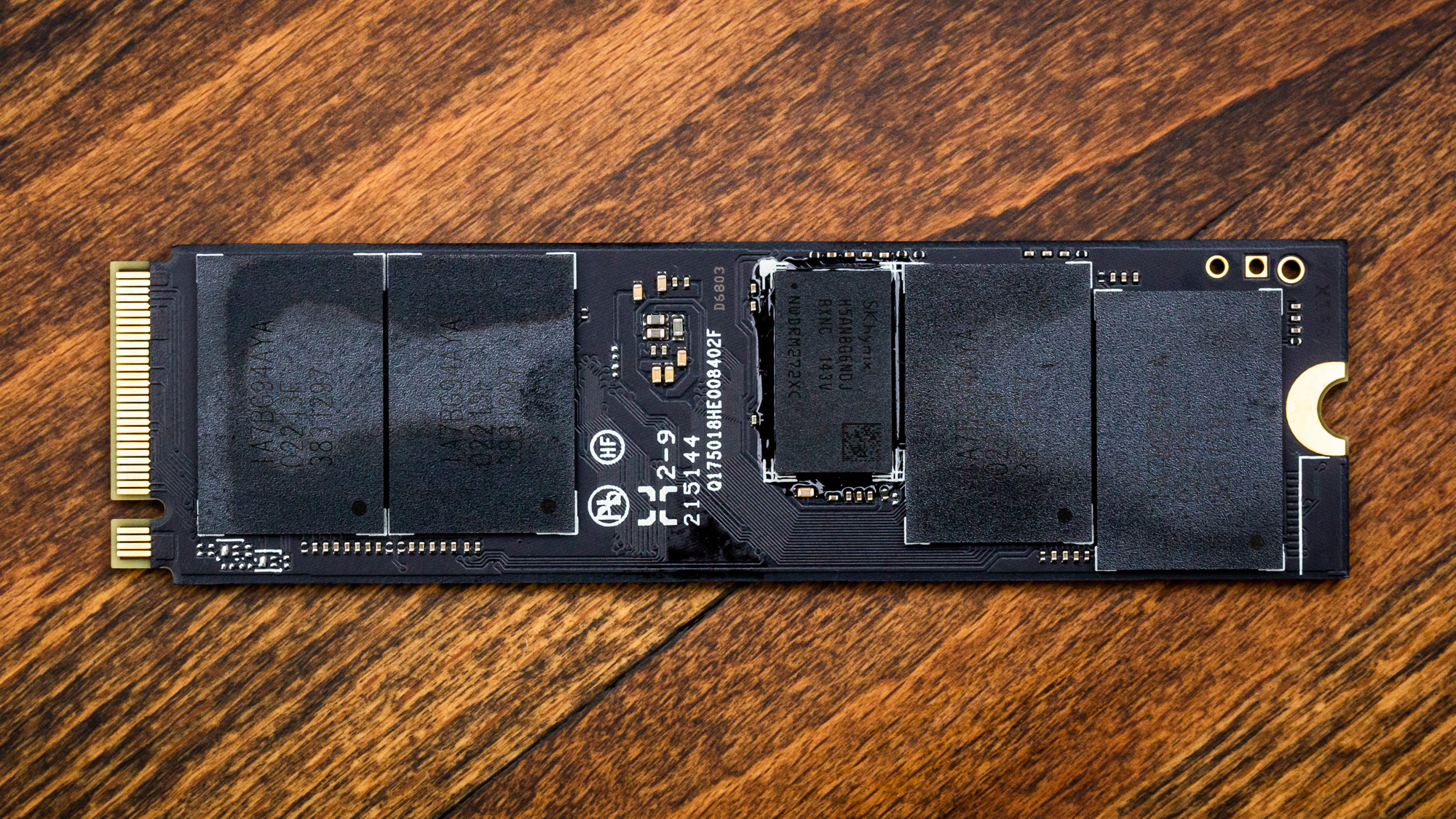
Our 2TB Rocket 4 Plus-G sample has labels on both the front and back, with pertinent information on the rear. Underneath the labels, we see the controller, one DRAM package per side for a total of two, and four NAND packages per side for a total of eight. This PCB is packed with componentry. The 4TB model is similar but has twice as many dies per package, while the 1TB model is single-sided.
The PCIe 4.0 Phison E18 controller should be familiar as we have benchmarked it on many SSDs. Sabrent says the controller has minor modifications, along with the firmware, to improve the reliability of the flash for sustained DirectStorage workloads. The DRAM is F5AN8G6NDJ DDR4 from SK hynix. This is 8Gb, or 1GB, in a 512M x 16b configuration for a total of 2GB with both packages. This is plenty of memory for a 2TB drive.
The flash modules are labeled IA7BG94AYA, which is also familiar. This is Micron’s 176-layer TLC which has been paired with the Phison E18 for quite a while now. Each of these eight modules has 256GB of NAND flash, or four 64GB dies in a QDP/4DP configuration. The NAND runs at 1600 MT/s. This memory has ample competition with SK hynix’s 176-layer TLC on the Platinum P41 and Samsung’s 176-layer TLC on the 990 Pro. The 232-layer successor flash is also anticipated, but a weak market has delayed significant deployment until 2023.
Phison specifically designed and tested its new firmware for Micron’s 176-layer TLC. This NAND meets the requirements for performance and endurance for sustained workloads. The firmware is workable, but not ideal, on older flash. DirectStorage workloads promise to hammer SSDs with random reads, which can pose challenges for both wear and thermal management. Newer flash, which tends to be more efficient and faster, is the best choice.
Sabrent did not release a new model when it upgraded the flash on the Rocket 4 Plus, which many of its competitors did with their lineups. The existence of two different generations of flash — skipping the uncommon 128-layer generation — may have led the company to bring out an optimized model specifically for Phison’s new firmware. There may be other reasons for this decision related to warranty and support. Precise details remain unknown as the firmware is currently unavailable on other drives.
MORE: Best SSDs
MORE: Best External SSDs and Hard Drives
MORE: How We Test HDDs And SSDs
MORE: All SSD Content

Shane Downing is a Freelance Reviewer for Tom’s Hardware US, covering consumer storage hardware.
-
DavidLejdar "questionable how useful DirectStorage will be"Reply
As end-user I know so far only that Win11 is recommended for DirectStorage (it is compatible with Win10, but Win11 has the latest storage optimizations build in - according to the dev blog). And the big feature is the GPU decompression, which they say can speed up loading by nearly 3x when the CPU is a bottleneck. But so far I haven't seen any info about what CPU they used - e.g. the screenshot on the dev blog just says "100% Max CPU usage" for the part without GPU decompression. What about latest CPUs though? Will a system with a new CPU still have some use for DirectStorage, or can the CPU actually handle it without?
On the other hand, that part could be tested already. Like when someone happens to have a rig with a top-performing CPU, does that CPU hit 100% usage when loading a game? If so, then one could argue that (even) a high-end system may benefit from DirectStorage - based on the info provided so far.
For me, who is likely to get one of these 4.0 SSDs, it would still leave a question though, of whether a NVMe SSD with firmware designed for DirectStorage gives that much a boost that it would be at least on par with a bit faster NVMe SSD in regard to game loading. -
PlaneInTheSky Allow me to be sceptical of "DirectStorage", or rather Microsoft its claims.Reply
The latest consoles have "DirectStorage". There might be some differences (consoles use shared memory), but overall it's quite similar tech to that coming to PC.
It allows system memory to bypass CPU overhead, and allows the GPU's parallel processing prowess to be used for texture decompression.
Yet loading speeds on consoles are not noticeably faster than on PC. The excuse so far has been that developers need to implement it. Yet if it was as straightforward to implement as claimed, where are all these titles on consoles with "almost instant loading time". Either DirectStorage is overrated, or implementing it seems so complex that developers aren't actually adding support to games. -
USAFRet Reply
Until we see the hardware in the wild, with applications actually created to take advantage of this DirectStorage....all is speculation.DavidLejdar said:"questionable how useful DirectStorage will be" -
umeng2002_2 The other issue is that some games don't dedicate enough CPU threads to decompression. So a 6 core or 16 core might only still use 2 threads to decompress assets. A dev now COULD really speed up loading, but many of them don't see it as a priority. When DirectStorage finally get FULLY released, it should be easy for devs to implement it in their games.Reply -
LastStanding Reply
That's the thing about being fully confident and having the full support to back it up to prove your claim (on release by having some titles ready to go when DS1.1 launches, not weeks/months later, to show off its prowess, and not the arrogant... "take a look at our skids and just take our word for it" nonsense) on day-0 of its deployment, especially knowing that MS has a very bad track record for under delivering on their promises. e.g. Game Mode, HAGS, Mesh Shader, etc.USAFRet said:Until we see the hardware in the wild, with applications actually created to take advantage of this DirectStorage....all is speculation. -
umeng2002_2 This technology is being used right now with the PS5 and Xbox whatever it's called... Sony doesn't really specify much more than just a sequential speed rating.Reply -
saunupe1911 Nope my next gen drive will be a 990 Pro. I will never buy a Sabrent drive again. Plus Samsung's software suite is the best in the business.Reply -
hannibal Like all new features, this will take time to be used in multiple applications. Games and other programs will be developed normal SSD as a target. Eventually there will be more and more programs that really would benefit from this feature. But it will take time, most likely years until this is feature you need, instead of nice to have.Reply -
Hortos I'm hoping its an issue of they know no PC currently can use the feature so they don't bother implementing it on any crossplatform game that will run on PC.Reply
